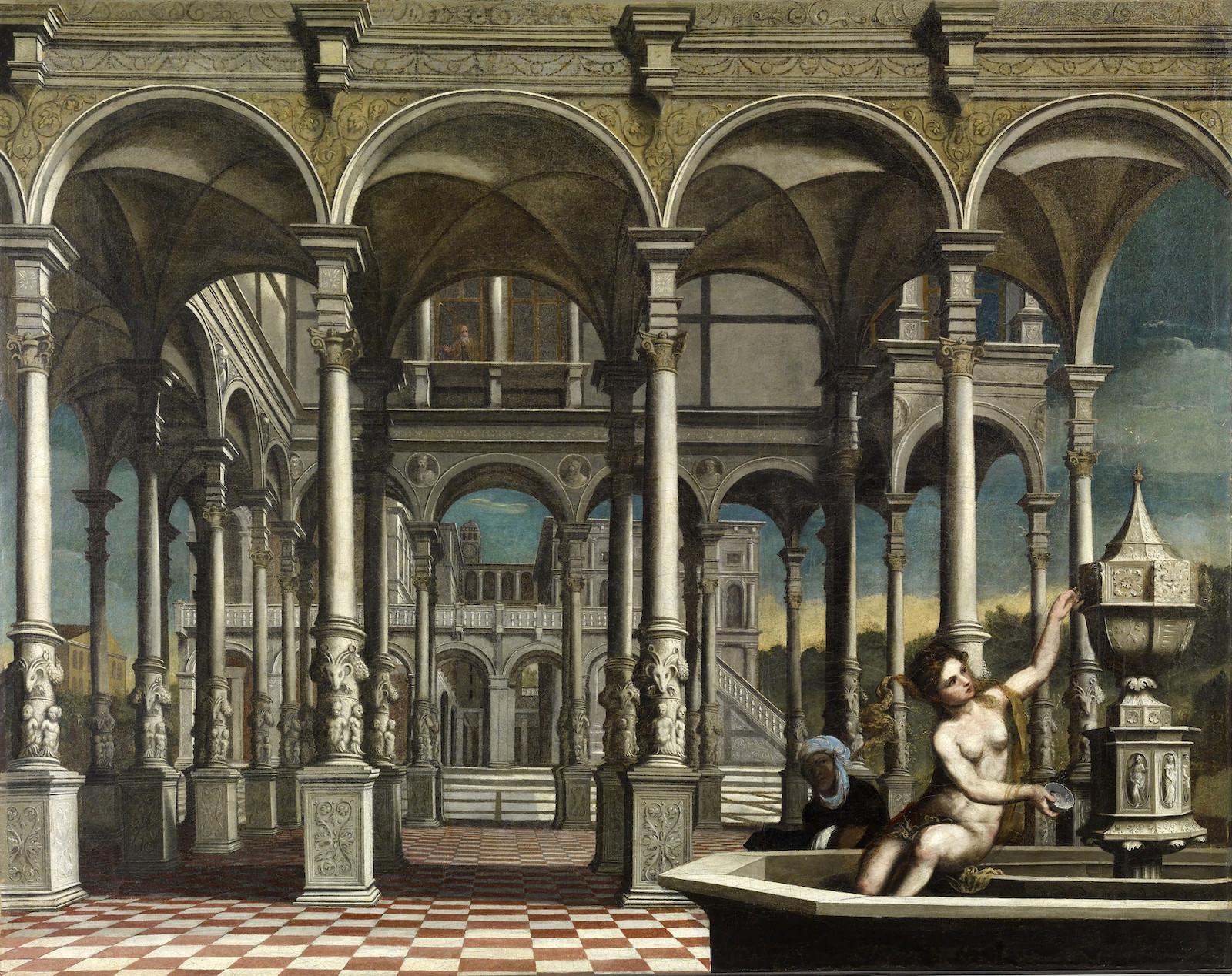
Shall I state the obvious about Baltimore? The city has taken quite a hit in the past several decades in terms of its reputation. The Baltimore Sun has a running database for homicides. There are many.
However, this author has been to a number of museums in the world—London, Berlin, Munich, Paris, Prague, Budapest, Vienna, Amsterdam, and many other cities—and never has she found a gem as hidden as the Walters Art Museum. Tucked away in a corner of Baltimore, the Walters is the kind of museum this author would love to take her mother and father to visit.
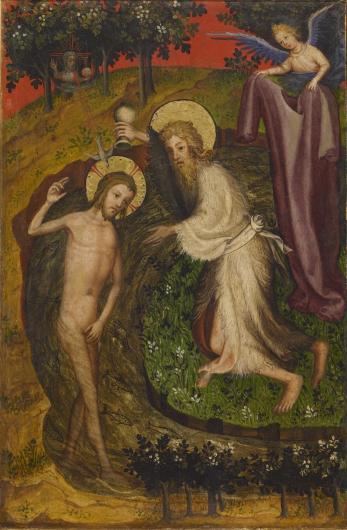
Unknown Dutch Artist, The Baptism of Christ, C. 1400.
Henry Walters, the founder of what became the Walters Art Museum, purchased this work in 1919 from a Parisian art dealer. It depicts the baptism of Jesus Christ by his cousin, John the Baptist.
The year in which Walters purchased this work is significant. This work likely would have been destroyed by Adolf Hitler as Entartete Kunst or "Degenerate Art" due to its depiction of a thin Jesus Christ as less than physically flawless.
Speculating the motivations of an unknown artist is inevitably a tricky subject. Yet the biblical story specifically notes that Christ came in human form. Would that not include a body that is inherently imperfect?
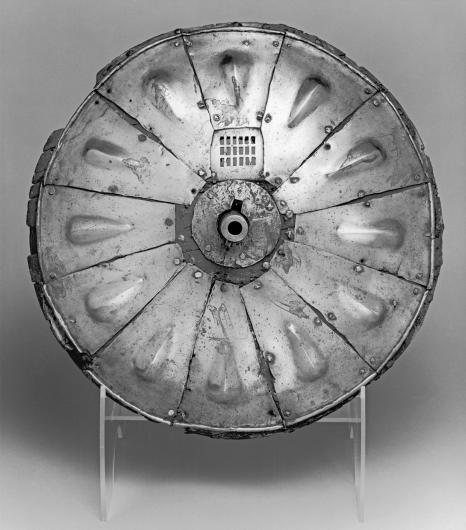
Giovanbattista of Ravenna, Gun Shield, C. 1545 - 50.
A trip to the Walters just to see this sixteenth century Gun Shield is a treat for any enthusiast of military history. Additionally, the museum’s clear display case creates a full-circle view presented amongst other medieval antiquities.
The idea shown here is a shield that had a firearm in its center.
The concept was introduced five hundred years ago. It is an early example of what is now termed the military industrial complex.
In fact, King Henry VIII (best known for his six wives and creation of the Church of England) purchased this very Gun Shield technology from an Italian gunsmith, Giovanbattista of Ravenna.
Due to the heaviness of the material, the Gun Shield failed, but helped serve as crucial research for lighter, more modern warfare.
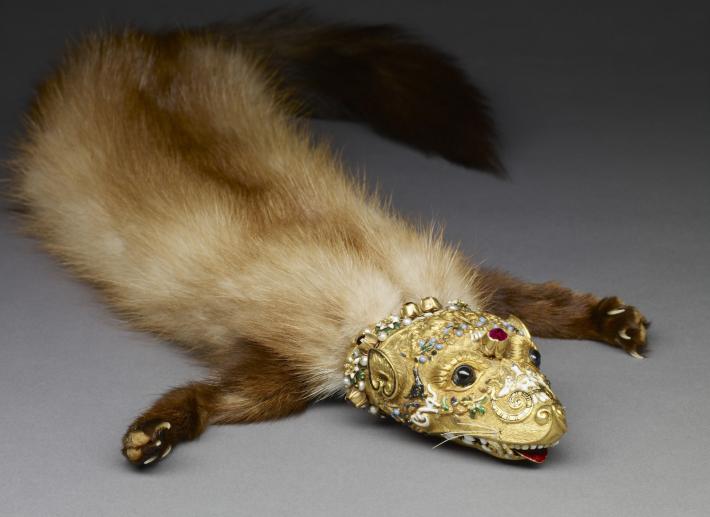
Unknown Umbrian Artist, Marten’s Head, C. 1550 - 9.
There was a time when decapitating small animals and replacing their heads with bejeweled metal was quite in fashion in Europe.
This marten’s head was replaced by gold with enamel, rubies, and pearls by an unknown artist from Umbria, in central Italy.
In Catholic Italy, in the sixteenth century, martens (related to otters, weasels, and badgers) were considered sacred and wearing their fur was considered beneficial for pregnancy.
Italian women would wear dead martens to protect them from infertility, as they believed that marten’s conceived through their ear or mouth, ostensibly more pure than mere Homo sapiens.
This artwork may spark many readers to feel superior to those who lived five hundred years ago. However, realistically, five hundred years from 2022, many of our customs may seem odd in 2522.
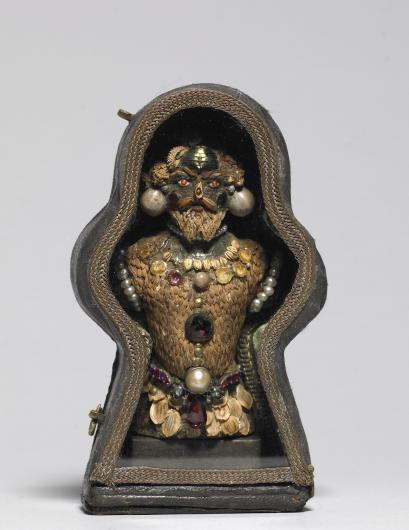
Unknown Italian Artist, Curiosity Figure (Seed Man), C. 1600.
This figure shows how the Walters Museum has preserved artifacts to an excellent degree, particularly for a relatively small museum.
Known colloquially as a Curiosity Figure, this artwork was created in Italy circa 1600. Despite being made almost entirely out of organic materials including beetle abdomens, wax, seeds, and nuts, this three-inch work has not suffered from decomposition or mold.
Scholars attribute that condition to its housing in a secure case created around the same time of the figure, which makes the artwork all the more tantalizing: to open the case would risk damaging the artwork itself, which paradoxically makes research into how it was made extremely precarious.
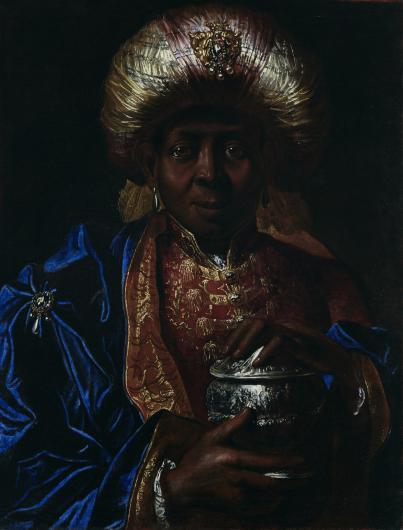
Unknown French Artist, Balthasar, C. 1700.
This portrait depicts Balthasar (also known as Balthazar), one of the Three Wise Men who visited Jesus Christ shortly after his birth.
In this work, Balthasar is shown with his traditional gift of myrrh, an embalming substance, for the young Christ in preparation for his inevitable crucifixion.
The way that this work has been preserved in the past three hundred years is noteworthy.
While the lighter colors of Balthasar’s crown and cast of myrrh have been impeccably preserved, the African King’s dark skin has been relatively untreated.
Entire essays could be written about the fact that portraits of darker-skinned people have been less preserved than those of wealthier, often lighter-skinned people.
Such a topic cannot be the scope of this slideshow. It is interesting to note, however, that the work has survived, despite discrimination, for three hundred years.
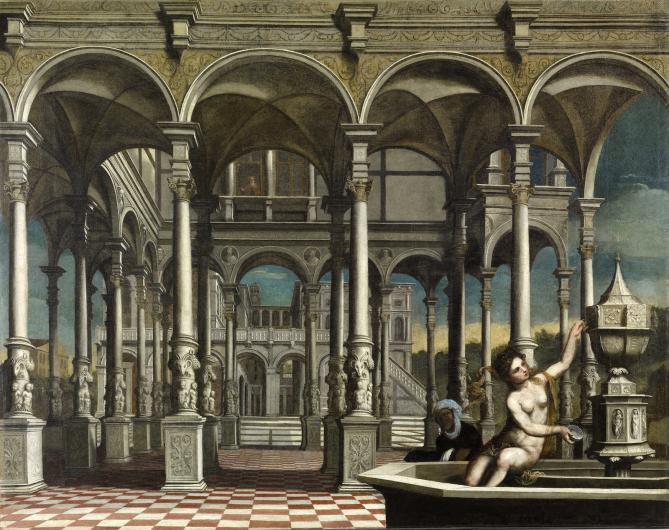
Paris Bordone, David and Bathsheba, 1540-9.
For those unfamiliar with the Judeo-Christian story, David and Bathsheba. is not only the title of this painting by Paris Bordone made between 1540 and 1549, but one of the most complicated and controversial biblical stories.
King David was the revered monarch of Israel whom Christians and Jews religiously consider the author of the Book of Psalms.
Yet, King David had a dark side. The custom of the time (roughly 900 B.C.) was that women bathed outside, albeit without elaborate fountains shown in this work. As the religious story goes, King David had numerous wives and concubines, yet he lusted after Bathsheba, and had her husband killed so that he could sleep with her.
From an art-historical perspective, this depiction of the biblical story is quite unique. Bordone, an Italian, places the scene in a Venetian palace complete with contemporary features to make it relatable to his viewers. Moreover, while many other depictions of Bathsheba blame her for supposedly seducing the king, effectively rendering a monarch blameless, Bordone purposefully left blank space in two-thirds of the foreground to create a sense of unease. That tension is heightened by the menacing figure of David, painted in hazy dark tones, staring directly at Bathsheba—and the viewer.
Mary M. Lane
Mary M. Lane is an art market journalist, an art historian, and the author of Hitler's Last Hostages: Looted Art and the Soul of the Third Reich. Reach her on Twitter: MaryLaneWSJ and Instagram: MaryLaneAuthor























